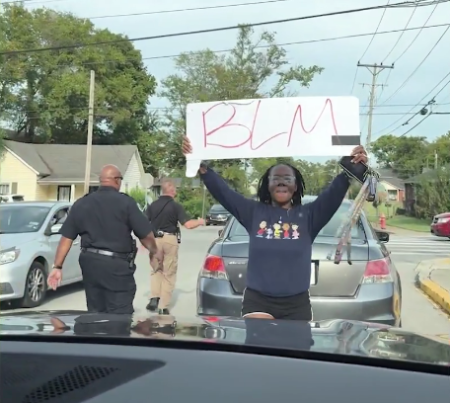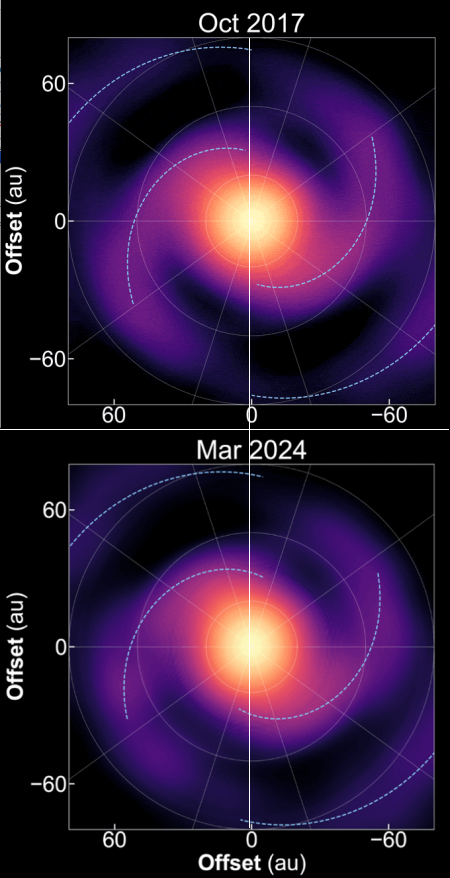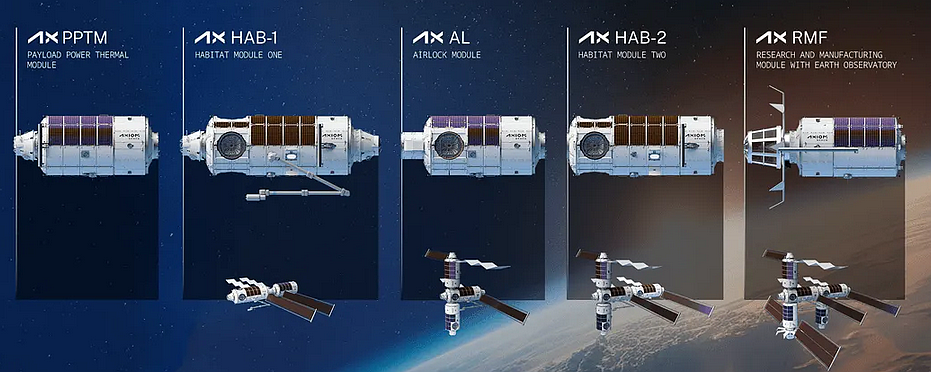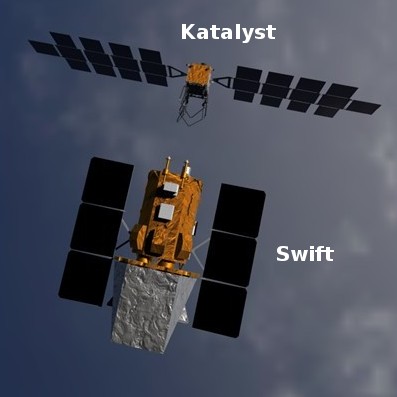Webb: Accretion disk surrounding exoplanet rich in carbon molecules
Using the Webb Space Telescope, scientists have detected a host of carbon molecules inside an accretion disk that surrounds an exoplanet circling a baby star 625 light years away.
Infrared observations of CT Cha b were made with Webb’s MIRI (Mid-Infrared Instrument) using its medium resolution spectrograph. An initial look into Webb’s archival data revealed signs of molecules within the circumplanetary disk, which motivated a deeper dive into the data.
…Ultimately, the team discovered seven carbon-bearing molecules within the planet’s disk, including acetylene (C2H2) and benzene (C6H6). This carbon-rich chemistry is in stark contrast to the chemistry seen in the disk around the host star, where the researchers found water but no carbon. The difference between the two disks offers evidence for their rapid chemical evolution over only than 2 million years.
You can read the original paper here [pdf]. The exoplanet itself is thought to have a mass 14 to 24 times that of Jupiter, making it almost a brown dwarf star. The NASA makes a big deal claiming this disk is forming a moon around the exoplanet, but that is not what the paper finds. This research did not find any evidence of a new moon exoplanet.
Instead, the paper found an accretion disk rich in carbon molecules, a finding that is significant on its own. It also found that that the accretion disk around the central star, while lacking carbon molecules, appears rich in water.
In other words, this baby solar system is packed with the right material for eventually producing life. Moreover, in this system’s relatively short life, two million years, these materials were able to sort themselves out so that the star has one concentration of material while the exoplanet has another. Both facts suggest that organic chemistry is common in the universe, and can evolve fast.
That is the important discovery here.
Using the Webb Space Telescope, scientists have detected a host of carbon molecules inside an accretion disk that surrounds an exoplanet circling a baby star 625 light years away.
Infrared observations of CT Cha b were made with Webb’s MIRI (Mid-Infrared Instrument) using its medium resolution spectrograph. An initial look into Webb’s archival data revealed signs of molecules within the circumplanetary disk, which motivated a deeper dive into the data.
…Ultimately, the team discovered seven carbon-bearing molecules within the planet’s disk, including acetylene (C2H2) and benzene (C6H6). This carbon-rich chemistry is in stark contrast to the chemistry seen in the disk around the host star, where the researchers found water but no carbon. The difference between the two disks offers evidence for their rapid chemical evolution over only than 2 million years.
You can read the original paper here [pdf]. The exoplanet itself is thought to have a mass 14 to 24 times that of Jupiter, making it almost a brown dwarf star. The NASA makes a big deal claiming this disk is forming a moon around the exoplanet, but that is not what the paper finds. This research did not find any evidence of a new moon exoplanet.
Instead, the paper found an accretion disk rich in carbon molecules, a finding that is significant on its own. It also found that that the accretion disk around the central star, while lacking carbon molecules, appears rich in water.
In other words, this baby solar system is packed with the right material for eventually producing life. Moreover, in this system’s relatively short life, two million years, these materials were able to sort themselves out so that the star has one concentration of material while the exoplanet has another. Both facts suggest that organic chemistry is common in the universe, and can evolve fast.
That is the important discovery here.













